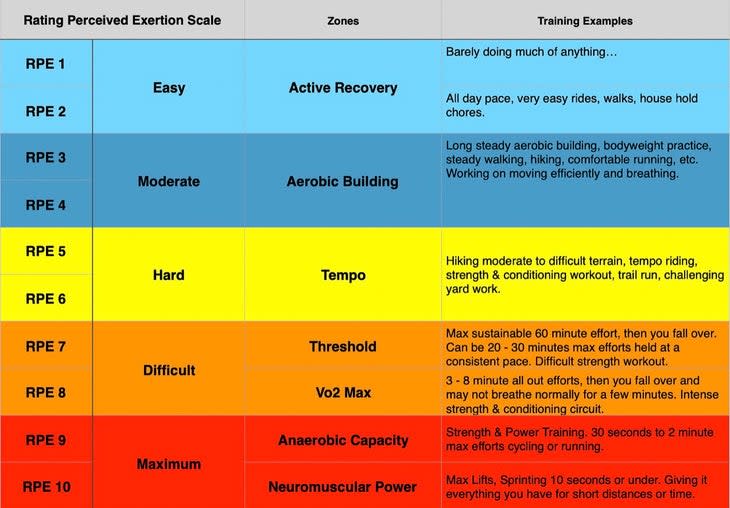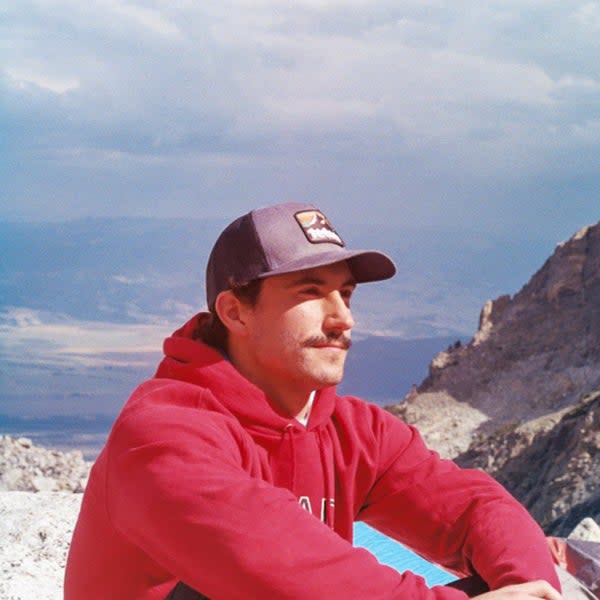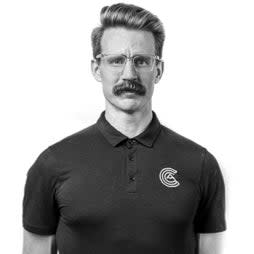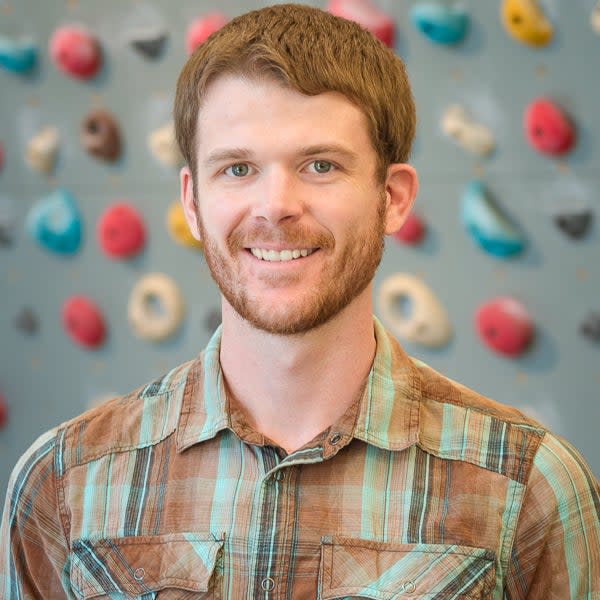The 10 Principles of Neuroplasticity Will Help You Hike Your Project
This article originally appeared on Climbing
Have your ever had a short-term project, say, two weeks in length, that went from feeling impossible to possible in just a few sessions? We all know it takes longer than a couple of weeks to build stronger muscles--so what changed? Why couldn't you flash the problem, and what made you be able to do it now? You have neuroplasticity and motor learning to thank.
What is neuroplasticity?
Neuroplasticity, or neural plasticity, is defined as, "the ability of the nervous system to change its activity in response to intrinsic or extrinsic stimuli by reorganizing its structure, functions, or connections."2 This is typically researched and utilized clinically when focusing on patients with stroke or traumatic brain injuries (TBI), but neuroplasticity occurs even in healthy individuals by two common mechanisms:
Neuronal regeneration/collateral sprouting
Functional reorganization
Functional reorganization is the central nervous system’s ability to change what cortical areas (different parts of the brain) execute certain functions or movements based on patterns of use or experiences, which in this case involves practicing certain movements on the wall. This is the mechanism that is used more commonly for healthy individuals, whereas neuronal regeneration only occurs as a result of peripheral nervous system (nerves in arms and legs) injury. Studies have found that repeated, challenging practice can lead to "brain mapping" changes, meaning that muscles used more frequently and challenged harder will have better representation in the brain, leading to increased efficiency3. Maximizing efficiency can make a huge difference during climbing, allowing for better muscle activation and coordination.
In fact, a study from 2013 found that prolonged periods of rock climbing actually leads to structural changes in the brain. This specifically occurs in the cerebellum and parietal lobe, which are crucial brain areas for balance and coordinated movements, as well as action and motor planning.4 And a 2019 study found that having higher expertise in climbing led to automaticity of certain motor movements, generally meaning that the better the climber, the more movements became "second nature" to them.5 The principles to maximize neuroplasticity for improved performance on the wall are explained below.
What is motor learning?
Motor learning is "an improvement of motor skills [managing process of movement] through practice, which are associated with long-lasting neuronal changes."6 This is an important concept to be familiar with as a rock climber, as the primary type of neuroplasticity and functional reorganization we utilize will be in the motor learning/movement department.
It is important to note that motor learning and neuroplasticity can be both good and bad based on practice and experience. This is clinically known as adaptive or maladaptive behavior or changes. Adaptive behaviors are what we're aiming to achieve with these principles. For example, continuously practicing different hold types in order to prevent overuse injuries, or learning to engage your legs on dynos to get a more powerful movement.
Maladaptive behaviors can occur after injury or simply in the absence of not knowing proper technique, which is common in beginners. An example of a maladaptive behavior would be winging your elbows out during a climb, which is a learned behavior that can potentially lead to increased shoulder stress. After injury, limited use of that joint or muscle affected is common due to pain or fear/expectation of pain, so in order to still complete the climb, your body will compensate by using other joints excessively. There are 10 principles that can be used to maximize neuroplasticity and motor learning to improve our nervous system's ability to observe, plan, and execute appropriately on the wall--from learning beta to sending our project.
The 10 Principles of Motor Learning7 and How They Are Utilized in Climbing
1. Use it or Lose it
Neural circuits that aren't being actively engaged in task performance for an extended period of time can begin to degrade. We have all experienced this in some way or another. Maybe you've taken an extended break from consistent climbing (such as during COVID-19), even with a hangboard at home, and felt "off" when you finally returned to climbing. The importance of this principle is to maintain as much of a consistent schedule as possible to make sure your gains are being preserved.
2. Use it and Improve it
This principle highlights that practicing a behavior (in this case, a specific move or problem) can not only prevent the loss of training progress, but improve it too. Skill training helps refine motor-learning performance, which is demonstrated through plasticity in the cerebral cortex of the brain. A good example here is practicing a dynamic move. Constantly (and deliberately) trying the move will improve your motor control and muscle activation. For a static move, this training may include determining the proper amount of tension that needs to be maintained while performing in an overhang. For instance, if you need to toe-hook and remind yourself to push your hips into the wall, it may require extra awareness to achieve this move which then temporarily pulls focus away from our next move. With continued practice on the route, less brain-processing space is needed to maintain that tension due to the motor learning that has occurred. While plasticity and functional reorganization isn't occurring immediately when attempting this, multiple bouts of attempts on different climbs will lead to brain changes over time to make you a better climber (more on this later).
3. Specificity
Studies have shown that participants who trained in skilled actions were able to improve corticospinal excitability, meaning their brain required less stimulation to enact that movement as opposed to untrained ones.7 What does this mean for climbers? Training for a specific problem or route will make you better at that route. For example, if your primary mode of climbing is a competition style, you'll want to train on artificial holds and competition-styled routes as much as possible to maintain the highest level of specificity. If you are a traditional climber, climbing outdoors as often as possible may benefit you more than training in other environments.
Specific training is about more than the surface you are climbing on--take a moment to consider the environment of each setting. Outside, it will likely be quieter than the gym, the weather will directly impact your body and the surface, and the sun will affect your vision. These small factors will all affect your performance outside of your deliberate training, so practicing in the desired environment is critical for salience (another principle we will discuss soon).
4. Repetition Matters
Repetition is important, especially after injury. For example, by repeatedly prioritizing more leg motion while in precarious shoulder positions, you are less likely to injure that shoulder. And without repetition, it is difficult to integrate the movement into different scenarios, which can lead to re-injury--or even continual failure on a problem.
5. Intensity Matters
In addition to repetition of motor skills, the intensity of your training and the stimulation present is critical to induce change. Logically, if you are not challenging yourself on the wall, you will not improve. The rate of perceived exertion (RPE) scale can be utilized for both physical and mental intensity. While learning some skills may not be physically intense on your muscles, it may require a lot of mental focus to master the technique and vice versa. Regardless, your intensity should be somewhere between 5-9 out of 10 for your RPE, with 10 meaning the hardest you've worked and 1 meaning at rest.

Here is a great example of the RPE scale.10 During your climbing, you can utilize this to determine if you are working hard enough to elicit motor learning and neuroplasticity into your training (5-9/10 RPE). Listed on the right are everyday examples of what these RPE levels could look like, but for everyone it will be a little bit different. This scale is completely subjective and determined by how you feel about the effort you put into your training, so just be sure you are working in between that hard to near-maximum effort with all working bouts of climbing or training.
6. Time Matters
Neuroplasticity is a complex process of continuous cellular and physiological events.7 It is not a single event. Patience is certainly required for motor skills to be developed especially for such an ever-evolving sport like rock climbing, where every problem or route is performed differently. And be aware: skill acquisition is extra slow after injury, so aim to work on skills at a lower intensity that provokes minimal pain. This principle is most relevant for those of you returning to climbing after injuries; make sure to place emphasis on returning to good habits to prevent injuries or overuse elsewhere. For example, if you are returning from a finger pulley injury on your left hand, you may be hesitant to pull with that finger and place more stress on your other fingers or other joints like your shoulder or elbow.
Generally, the importance here for climbers is to remember to rest in between sessions to prevent overuse and to not get frustrated when we get stuck on certain moves. Instead, continue with the implementation of the other principles of motor learning in order to eventually adopt the new movement successfully. Lattice Training offers a useful blog post about signs to look for to prevent burnout and how to listen to your body.11 Some examples of burnout or overtraining include:
Decreased performance
Increased resting heart rate
Reduced sleep quality
If you begin to notice any of these signs in your training, increase your rest times. This may mean having an extra active rest day, or having lower intensity (5-7 RPE) training days staggered with intense (7-9 RPE) training days. Another option is to take a de-load week, which is a week of training at a much lower volume or intensity. I typically maintain the same amount of climbing, but reduce my exercise intensity to 50% of my maximum every 8 weeks or so.
7. Salience Matters
For effective function in any activity, each individual must weigh the importance of the experience that the brain is encoding.7 Salience is the quality of being particularly noticeable or prominent. Finishing a problem might not be rewarding for some who are attempting rock climbing, but many of us it certainly is. The brain contains systems that mediate what we will give our attention to even in the presence of multiple stimuli, so engagement of this system is crucial for neuroplasticity. In other words, it is important to give our climbing full attention and engagement for increased motor skill development on the wall.
Earlier when discussing training specificity, we emphasized the importance of training in your performance environment, as the environmental factors can influence your performance (people talking loudly, weather conditions, etc.). As you train in this environment, your brain is also learning what input from your environment is important for the goal. For instance, your brain learns that focusing on the problem, the beta, and the types of holds are more critical to your importance than focusing on what people are talking about on the ground or how hot it may be outside. Try this: as you approach a new route, feel out a few holds and imagine how you'll have to position your body. Think about which areas of your body you will have to intentionally activate to maintain body tension. In between attempts, visualize the moves and study videos of your climbing. Doing so will almost certainly improve your next bout.
8. Age Matters
Neuroplastic responses tend to be altered in older individuals, meaning that these principles will lead to less of a change the older you are. Aging can even lead to neuronal and synaptic atrophy or wearing away.7 While this isn't a principle we have control over, it is important for older climbers to recognize that progress in skill acquisition may occur at a slower rate than a younger climber implementing the same motor learning principles into their training. But, good news to all older climbers, there has been evidence that found that altering mindset can enhance motor learning in older adults.12 This study found that participants were able to perform better during balance tasks when they had more self-efficacy or belief in themselves prior to the task. Additionally, when they were informed that peers usually did well on the task, they were able to improve performance. So surround yourself with supportive peers and practice self-belief tactics to increase performance.13
9. Transference
Transference is the ability of plasticity, within one set of neural circuits, to increase others occurring at the same time or directly after.7 Basically, this means that as we improve motor learning with one skill, it can improve other surrounding skills as well. For example, if we are completing a coordinated move that requires a toe hook, heel hook, and an undercling grip one after the other, the acquisition of completing the toe hook will allow our brains to more easily complete the heel hook and undercling moves. This phenomenon is even more likely to occur in individuals who regularly exercise, as exercise has been shown to promote a fertile environment to support neuroplastic changes.
10. Interference
The final principle of motor learning is the complete opposite of transference.7 As skills are practiced and plasticity occurs, the muscle activation during those skills increases cortical representation in the brain. There is only so much room for motor skills to gain representation in our brain, so some skills can become less defined. This can be useful when kicking a bad (and unconscious) climbing habit. For example, beginner climbers tend to hike their shoulders towards their ears or pull strictly with their arms. As practice is performed deliberately, these habits can be "forgotten" and replaced when climbing so that these smaller bad habits aren't actions that need to be consciously thought about when climbing. This principle also highlights that learned motor patterns are harder to "break" than creating completely new ones from a new activity.
What's Next?
Now that we have learned about the 10 principles of experience-dependent neuroplasticity, we can use them to maximize our movement and time spent on our projects. These principles can be used alongside strength and endurance training to learn motor techniques that can be transferred from problems in the gym to the crag. In summary, here are brief explanations and uses of each principle in your training:
Use it or Lose it: Maintain a consistent training/climbing schedule to ensure current neuroplastic changes are maintained. Climbing or doing climbing-related activities/movements 2-3 times per week is recommended.
Use it and Improve it: Maintaining a consistent training schedule will lead to neuroplasticity and improvements in motor learning by allowing the brain and central nervous system multiple opportunities to facilitate growth, leading to better motor control on the wall. The same recommendation of climbing frequency here, 2-3 times per week.
Specificity: Each working set of your training should be specific to what your performing climbing will be. This means competition boulderers should primarily focus on bouldering, and trad climbers should primarily focus on outdoor traditional climbs that are as similar as possible to their goal climbs.
Repetition Matters: The more you are able to practice a motor skill, the more likely you are to learn that new motor skill. While there isn't evidence on this in climbing specifically, there have been numerous studies on elite soccer players showing that multiple repetitions can assist greatly in motor learning.14 The more repetitions of a climbing skill you are able to do while allowing your body recovery time, the better!
Intensity Matters: training with adequate challenge leads to neuroplasticity and motor learning. Ensure that training sets are performed at an RPE between 6-9/10 (utilize RPE scale in 'Intensity Matters' module for reference) to provide the central nervous system with adequate feedback.
Time Matters: Neuroplasticity is not a single event, but is occurring constantly over time. It is by no means a short process, and maintaining consistent practice over time will produce the best results. Develop a training regimen that will allow you to maintain consistency, so that neuroplastic changes have time to take place. For example, most people do not have the time to climb everyday for multiple hours. Training 2-3 times a week may be a more attainable goal that allows for greater consistency, but find whatever works best for you.
Salience Matters: Things that we perceive as important are critical to motor learning. With time our brains learn what input is important towards the task goals. Make sure you are climbing in the environment you want to perform in as often as possible to allow your brain to learn to "drown out" unimportant information that may affect performance, such as background noise or weather.
Age Matters: The older you are, the more difficult it is to facilitate motor learning and neuroplasticity, luckily, perception of tasks can help initiate learning. This means believing that you are able to finish the climb, building upon your self-efficacy, and climbing with peers who are supportive of your goals and being supportive to them as well.
Transference: Working on one motor skill will help in the acquisition of similar motor skills. As you are performing your training to facilitate motor learning, this phenomenon will occur, making new skills easier to acquire as long as you are continuously trying new types of challenging climbs and working on weaknesses.
Interference: Acquiring a skill can interfere with the acquisition of others. This can mean that unlearning bad habits can be stubborn or difficult to do (emphasizing the importance of repetition!), or that developing good habits on the wall (like proper mechanics) can help us keep bad habits from developing in the first place.
About the Author

Evan Schneider is a Doctor of Physical Therapy and Master of Public Health student from Arcadia University. He recently published his first paper in the Journal of Ethics, Medicine, and Public Health titled "Family caregivers' use and evaluation of patient medical products or assistive devices: A systematic literature review." His main interests are in sports, orthopedic, and neurological physical therapy as well as public health. Evan is also interested in relating public health and exercise to injury prevention for all athletes. He hopes to serve the local climbing community of the greater Philadelphia area and serve the community he loves.
Evan primarily boulders at a V8 level which is done at a gym on a regular basis but also includes outdoor climbing on weekends and breaks from school. He was first introduced to the sport of climbing in 2010. Evan hopes to provide individuals with the tools to maintain or improve their health on their own and guide them to a better version of themselves. He currently participates in the Physical Therapy Multicultural Leadership Alliance at Arcadia and works in their Pro Bono clinic.
When Evan isn't climbing you can find him riding his bike, traveling the world to summit a mountain, reading philosophy books, or finding the best way to brew his morning coffee. He connects with anyone who has a passion for virtue, music, being the best version of themselves and trying to bring out the best in others.
Follow Evan on Instagram @evanschneiderr or connect via email: epms0702@gmail.com
About the Contributors

Dr. Jared Vagy "The Climbing Doctor," is a doctor of physical therapy and an experienced climber, has devoted his career and studies to climbing-related injury prevention, orthopedics, and movement science. He authored the Amazon best-selling book Climb Injury-Free, and is a frequent contributor to Climbing Magazine. He is also a professor at the University of Southern California, an internationally recognized lecturer, and a board-certified orthopedic clinical specialist.
To learn more about Dr. Vagy you can visit theclimbingdoctor.com or visit him on Instagram @theclimbingdoctor or YouTube youtube.com/c/TheClimbingDoctor

Kevin Cowell is a physical therapist, clinical instructor, and rock climber based out of Broomfield, CO. Kevin owns and operates The Climb Clinic (located at G1 Climbing + Fitness) where he specializes in rehab and strength training for climbers and mountain athletes. He found his passion for climbing in Colorado while attending Regis University for his Doctorate of Physical Therapy and has since become a Certified Strength & Conditioning Coach (CSCS), Board-Certified Orthopaedic Clinical Specialist (OCS), and a Fellow of the American Academy of Orthopaedic Manual Physical Therapy (FAAOMPT).
You can contact Kevin via email at kevin@theclimbclinic.com or by visiting www.theclimbclinic.com. Also, be sure to follow Kevin at @theclimbclinic on Instagram for free rehab and strength training resources.

Julien Descheneaux is a master of physical therapy who dedicates himself exclusively to rock climbing injuries, having treated over 1,200 climbers. He's been covering Quebec competitions as a certified Sport First Responder since 2014. He is also the author of the online class "Climbing injuries at the upper quadrant" for the Quebec PT Board (OPPQ) and gives regular clinics and conferences on the subject. He founded PhysioHR in 2016, the first PT clinic inside a rock climbing gym in Canada and is currently the resident PT at Bloc Shop Chabanel.
You can contact Julien via email at julienlephysio@gmail.com or by visiting https://www.physioescalade.com/.

Todd Bushman is a doctor of physical therapy, clinical instructor, Certified Strength and Conditioning Specialist (CSCS), and climber of mountain, rock, ice, and plastic. Todd is a dedicated climbing specialist based out of Bozeman, MT where he practices full time. He is actively pursuing advanced training to become a Certified Orthopedic Manual Therapist (COMT) through the North American Institute of Orthopedic Manual Therapy. Todd is also available for remote consultation regarding climbing injuries, movement analysis, and strength training.
You can contact Todd via email at todd.climbingcoach@gmail.com or visit him @try.hard.pt on Instagram.

Carly Post is a physical therapist in Los Angeles, California. She is passionate about climbing and enjoys helping people move better and optimize their ability to participate in their lives to their fullest potential. She can be reached at carlypos@usc.edu and on Instagram at @carlypost
Resources
Moritani, Toshio M.A.; deVries, Herbert A. Ph.D.. NEURAL FACTORS VERSUS HYPERTROPHY IN THE TIME COURSE OF MUSCLE STRENGTH GAIN. American Journal of Physical Medicine 58(3):p 115-130, June 1979.
Puderbaugh M, Emmady PD. Neuroplasticity. In: StatPearls. Treasure Island (FL): StatPearls Publishing; May 8, 2022.
Randolph J. Nudo, Erik J. Plautz, Garrett W. Milliken, Adaptive Plasticity in Primate Motor Cortex as a Consequence of Behavioral Experience and Neuronal Injury, Seminars in Neuroscience, Volume 9, Issues 1-2, 1997, Pages 13-23, ISSN 1044-5765, https://doi.org/10.1006/smns.1997.0102.
Di Paola, M., Caltagirone, C. and Petrosini, L. (2013), Prolonged rock climbing activity induces structural changes in cerebellum and parietal lobe. Hum. Brain Mapp., 34: 2707-2714. https://doi.org/10.1002/hbm.22095
Carius D, Hornig L, Ragert P, Kaminski E. Characterizing cortical hemodynamic changes during climbing and its relation to climbing expertise. Neurosci Lett. 2020;715:134604. doi:10.1016/j.neulet.2019.134604
Anna-katharine Brem, Kathy Ran, Alvaro Pascual-leone, Chapter 55 – Learning and memory, Editor(s): Andres M. Lozano, Mark Hallett, Handbook of Clinical Neurology, Elsevier, Volume 116, 2013, Pages 693-737, ISSN 0072-9752, ISBN 9780444534972, https://doi.org/10.1016/B978-0-444-53497-2.00055-3.
Kleim JA, Jones TA. Principles of experience-dependent neural plasticity: implications for rehabilitation after brain damage. J Speech Lang Hear Res. 2008;51(1):S225-S239. doi:10.1044/1092-4388(2008/018)
Trainingbeta. TrainingBeta. https://www.trainingbeta.com/. Published January 2, 2023. Accessed March 11, 2023.
Rex. The best type of rock for rock climbing: Climbing Geology. Rock Climbing Guru. https://rockclimbingguru.com/the-best-type-of-rock-for-rock-climbing-climbing-geology/. Published August 27, 2022. Accessed March 11, 2023.
Mountain Peak Fitness. http://mountainpeakfitness.com/. Accessed March 11, 2023.
Hutchens E. Burnout: Listen to your body & adapt. Lattice Training. https://latticetraining.com/2023/02/07/burnout-listen-to-your-body-adapt/. Published January 31, 2023. Accessed March 11, 2023.
Wulf G, Chiviacowsky S, Lewthwaite R. Altering mindset can enhance motor learning in older adults. Psychol Aging. 2012;27(1):14-21.
Nicole Celestine PD. 4 ways to improve and increase self-efficacy. PositivePsychology.com. https://positivepsychology.com/3-ways-build-self-efficacy/. Published March 3, 2023. Accessed March 11, 2023.
L. Verburgh, E. J. A. Scherder, P. A. M. van Lange & J. Oosterlaan (2016) The key to success in elite athletes? Explicit and implicit motor learning in youth elite and non-elite soccer players, Journal of Sports Sciences, 34:18, 1782-1790, DOI: 10.1080/02640414.2015.1137344
For exclusive access to all of our fitness, gear, adventure, and travel stories, plus discounts on trips, events, and gear, sign up for Outside+ today.

